17 Blue Fruits You Absolutely Need to Know About
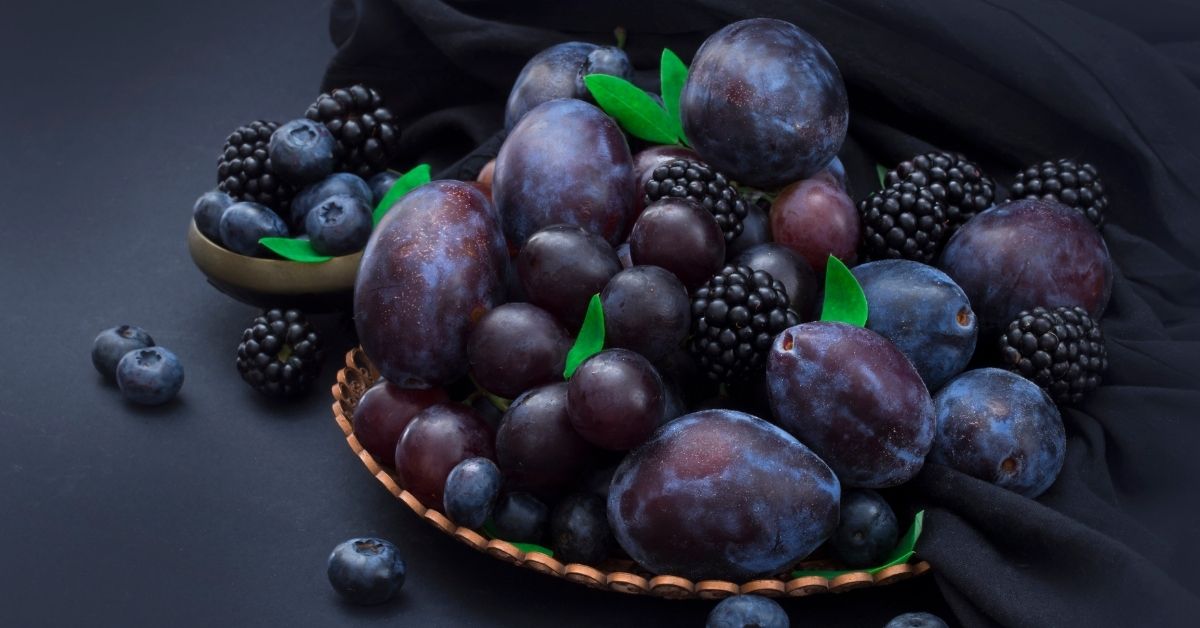
Fruits play an important role in human lives; they are an excellent source of essential vitamins and minerals, including dietary fiber, vitamin C, and potassium. That’s not all; fruits also provide antioxidants, which are much-needed to boost your health.
It’s unknown the exact number of fruits that exist across the world. However, according to researchers, there are more than 2,000 different types of fruits out there. Furthermore, these fruits are available in almost all colors, including red, purple, yellow, and green.
Fruits are also available in blue colors, but they rarely exist due to a couple of reasons, such as the acidity of the soil. Blueberries and blackberries are two examples of blue fruits that exist across the world. Some others are Blue Marble Fruits, Bilberries, Honeyberries, Damson Plums, and Fahrenheit Blues Tomatoes.
In the rest of this post, I’ll further share with you the list of some of the common blue fruits across the world. The list is going to be divided into four different groups; light blue fruits, dark blue fruits, blue tropical fruits, and blue citrus fruits. So, without further wasting your time, let’s get straight down to business.
List of the Common Blue Fruits Across the World
Unlike red and green, blue fruits are very rare in nature. Well, there are a couple of reasons attached to why you hardly see blue fruits – I’ll cover that at the end of this post.
Speaking of blue fruits; I classified them into four different categories; light blue fruits, dark blue fruits, blue tropical fruits, and blue citrus fruits. Some examples of light blue fruits are the blue filius peppers and blue marble fruits. Blackberries are a good example of dark blue fruits. That said, let’s take them one at a time and see the different fruits under each category.
Light Blue Fruits
Blueberries
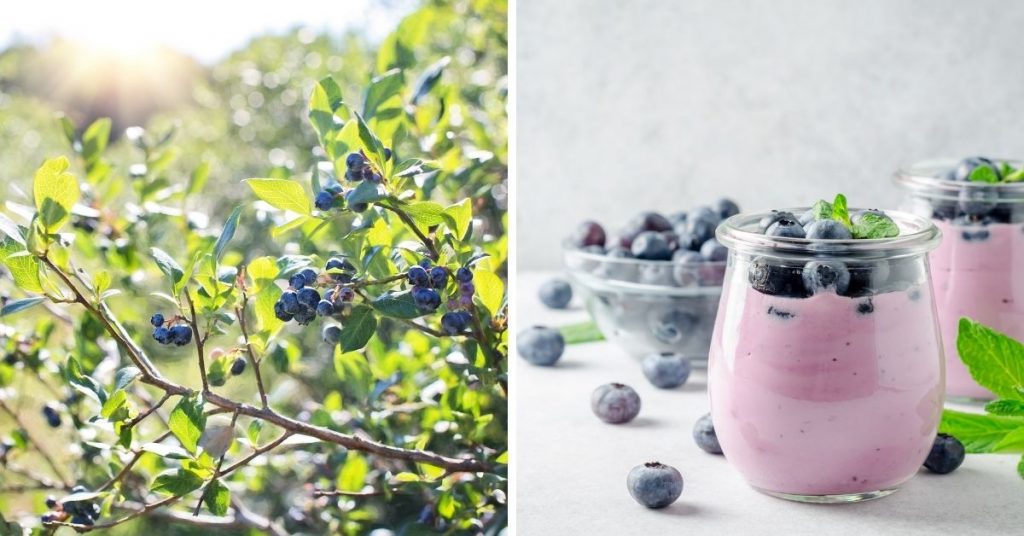
One of the fruits under the light blue fruit category is blueberries. In case you don’t know, blueberries are fruits that contain a plant compound, known as anthocyanin. It’s the presence of this colored, water-soluble compound that provides blueberries with their blue color.
Thanks to the presence of the anthocyanin compound, which belongs to the phenolic group, blueberries are capable of delivering several different health benefits. Blueberries are a great source of flavonoids, polyphenols antioxidants that help to protect your body against free radicals, which could damage your cells.
Furthermore, blueberries are pretty low in calories but high in fiber, vitamin C, and vitamin K. They help to reduce damages to your DNA and protect your body against cancer and aging, according to PubMed and the National Library of Medicine. [1]
That’s not all; blueberries are also effective for protecting the cholesterol in your blood from getting damaged. As such, these fruits are very good for your heart. Moreover, blueberries can always help you lower your blood pressure, improve your memory, and prevent diabetes.
Bilberries
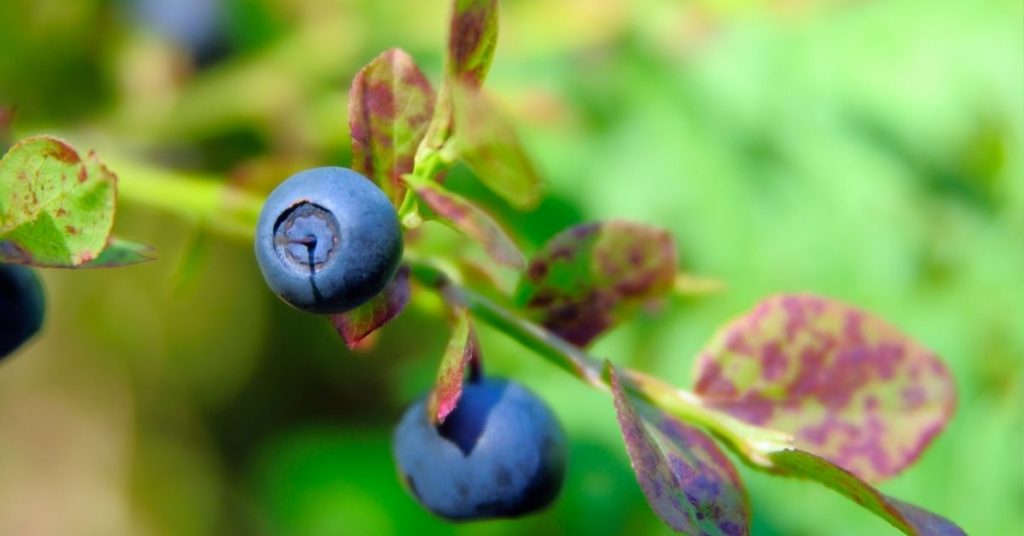
Bilberries aren’t as common as the rest of the fruits on this list because they are pretty similar to blueberries – you can call them cousins. Unlike blueberries, however, these fruits mostly grow on twigs and not in clusters.
Furthermore, bilberries are highly rich in vitamins and minerals. Yes, they are a great source of vitamin C and antioxidants. One of the health benefits of eating these fruits is that they help to reduce inflammation.
That’s not all; bilberries are effective for improving both your heart health and brain function. Also, the fruits help to kill bacteria and improve vision.
Blue Dragon Fruit
Dragon fruits often grow on climbing cactus, known as Hylocereus. These fruits usually appear in red or yellow skin. However, dragon fruits also come, in rare cases, with a blue color.
The blue dragon fruits contain several different nutrients and minerals. Some of the popular ones are protein, fiber, carbohydrates, and calories. That’s not all; the blue dragon fruits also contain vitamin A, vitamin C, Magnesium, Iron, and Calcium.
Speaking of their health benefits, the blue dragon fruits are rich in antioxidants, such as flavonoids, which protect the body cell against the harmful effects of free radicals that could cause cancer. [2]
Blue Apple Fruit
Blue apple fruits often come with thick and tough skin. Additionally, they have a matte, dusty appearance, all thanks to the soft blue bloom that covers the fruits.
Blue apple fruits are rich in fiber, which is great for stimulating your digestive tract. The fruits also contain potassium to balance your body’s fluid levels and vitamin C for strengthening your immune system. Other essential nutrients that come with the blue apple fruits are vitamin K, manganese, copper, and vitamin A.
Blue Java Banana
Blue Java bananas are fruits commonly found in Southeast Asia and Northern Australia. These fruits are hardy, cold-tolerant banana cultivars that deliver sweet aromatic flavor.
Furthermore, the blue java bananas contain tons of great nutrients, such as calories (about 105), protein, carbs, fiber, vitamin C, riboflavin, manganese, magnesium, folate, etc. Eating these fruits, generally, helps to promote weight loss and improve your digestive health.
Honeyberries
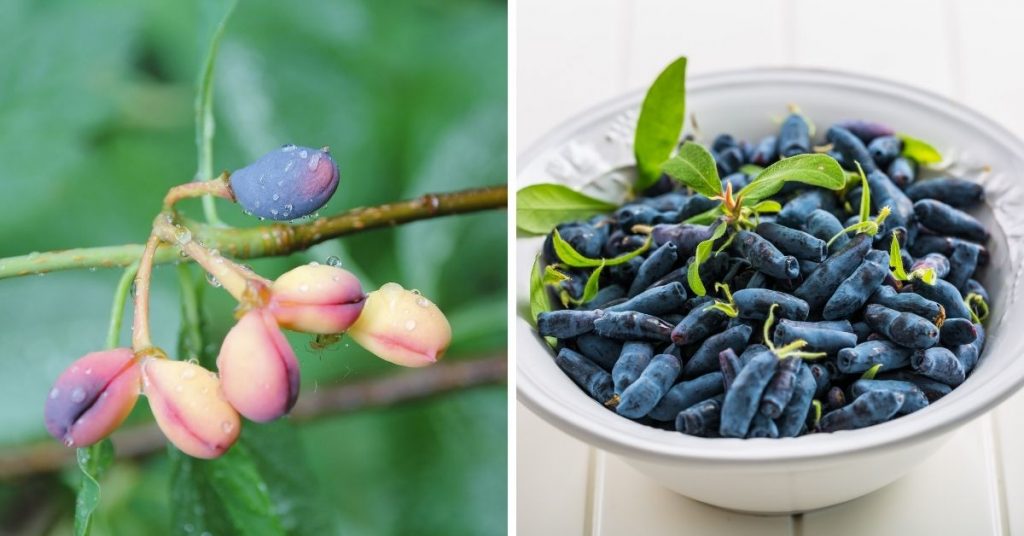
Honeyberries are fruits that are usually grown in several different regions of the world, including northern Japan, Russia, and Canada. These fruits have almost the same taste like raspberry, blueberry, or kiwi.
Furthermore, Honeyberries contain some amount of potassium, calcium, iron, and phosphorous. The fruits also contain a high amount of vitamin C. That’s not all; the fruits are also antioxidants, which help to reduce inflammation and prevent cancer.
Blue Tropical Fruits
Tropical fruits are the types of fruits that are planted in hot and humid regions, within the Tropic of Cancer and Tropic of Capricorn. These fruits cover almost all the tropical and subtropical parts of Africa, Central America, Asia, and South America.
Blue Marble Fruit
The blue marble fruits fall under the blue tropical fruit category. They are tropical fruits because of where they’re grown. The blue marble fruits are known to always grow in moist lowland tropic and subtropic regions, especially those with elevations up to 500 meters and an annual daytime temperature range of 18 – 28 degrees Celsius.
Unlike most other blue fruits out there, which are produced by the presence of anthocyanin pigments, the blue color of these fruits is usually caused by physical interference.
Here’s how the blue color is achieved; inside the blue marble fruit’s epidermal cells, there are cellulose layers, which form a special structure inside the cell wall and outside the cell membrane. The cellulose layers do that by forming constructive thin-film interference with blue light. This explains how the blue marble fruits get their blue color.
Juniper Berries
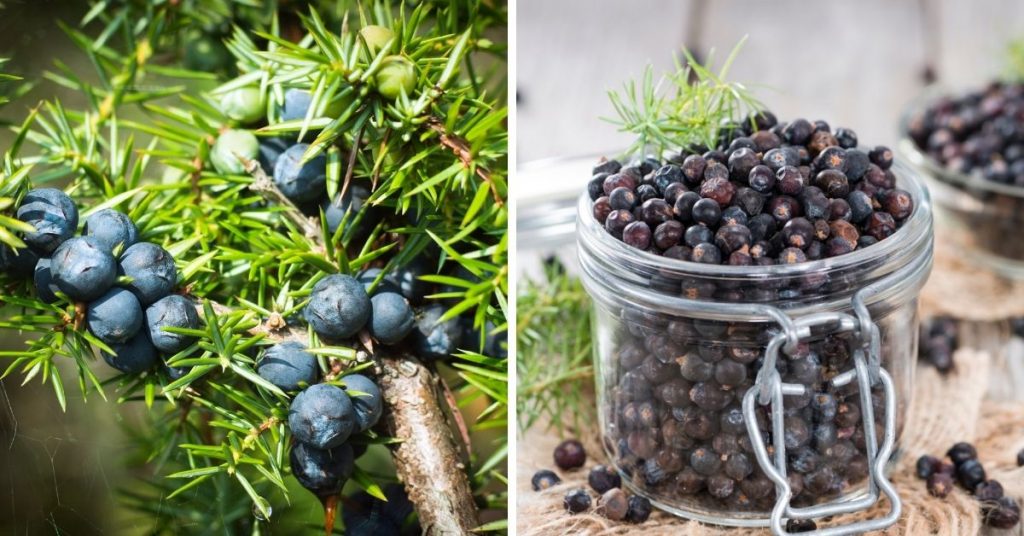
Juniper berries are small berries with blue color that are usually found in the Nordic region. I’m listing these fruits under the blue tropical fruit category because they are also popular in tropical Africa.
Junipers are very weird in the sense that; when they grow older, they tend to produce two different types of fruit berries; blue and green berries. You can always find these two types of fruits on the same Juniper tree. Here’s the thing – Junipers tend to bloom in their first year; they produce green fruits in the second year, and in the third year, the berries turn to dark blue.
Damson Plums
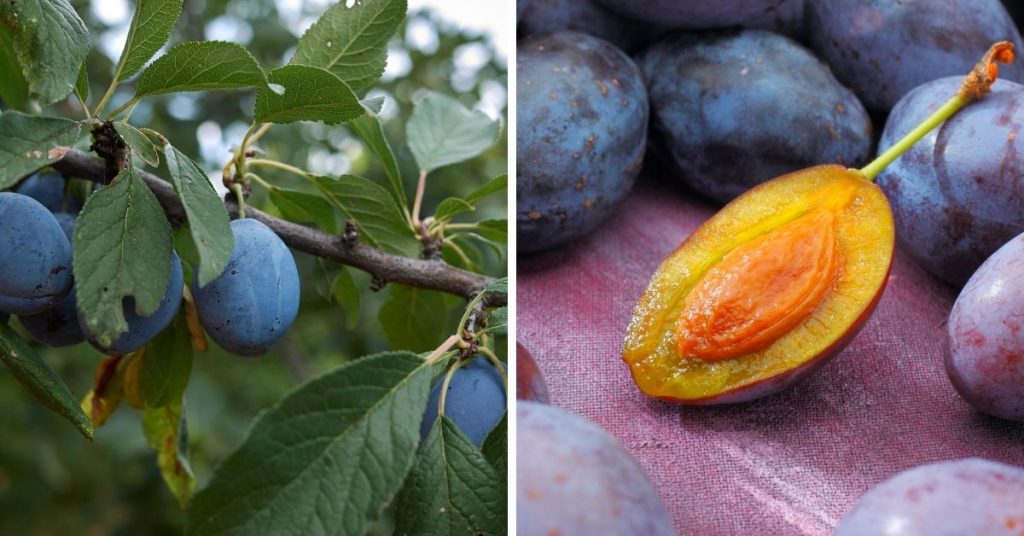
Damson Plums are tropical fruits that are found in several parts of the world. They are usually common across European countries, especially Great Britain.
According to Organic Facts, Damson Plums are rich in vitamin C, dietary fiber, and riboflavin. [3] Apart from that, the fruits also contain some amount of potassium, manganese, magnesium, phosphorus, and copper. That’s not all; the fruits also aid digestion and improve heart health.
Blue Mango Fruits
The blue mango fruits are rare fruits that are commonly found in Madagascar, off the coast of Africa. These fruits usually grow well in subtropical climates. They are rich in antioxidants, which helps to prevent issues that come with free radicals in the body.
Dark Blue Fruits
Blackberries

Although blackberries are native to Europe, they can always be grown in the United States and other parts of the world. They are dark-blue berries; this explains why I’m listing the fruits under this category.
Blackberries are sweet and nutritious berries that deliver tons of health benefits. For instance, they contain a high level of vitamin C. Yes, 100g serving of this fruit delivers about 35% of the RDA (or recommended daily allowance) of vitamin C. That’s not all; the fruit is also rich in fiber. You can always get up to 14% of the RDA of fiber from a 100g serving of blackberries.
Other nutrients present in blackberries are vitamin K, vitamin A, and antioxidants, which help to fight against the harmful effects of free radicals in the body cells.
Elderberries
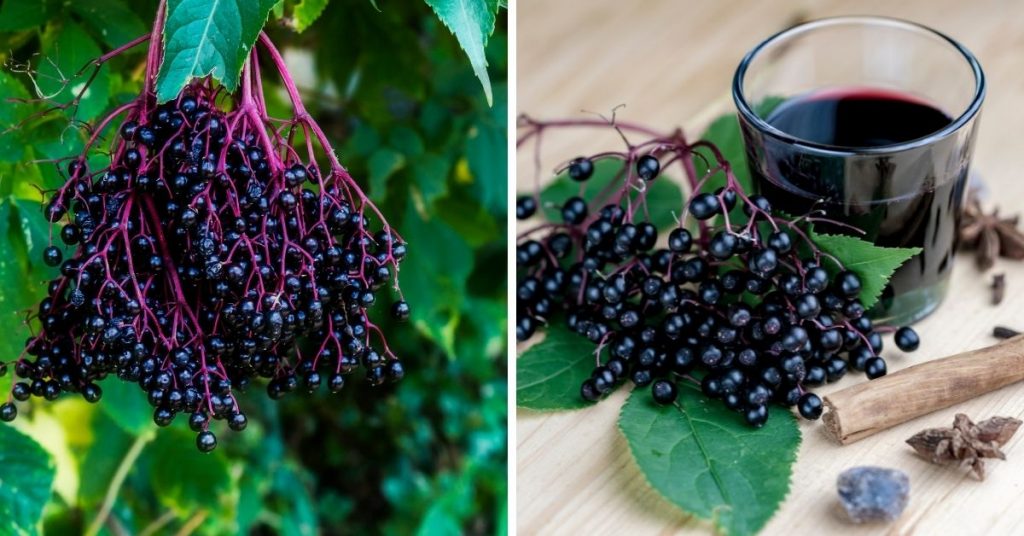
Elderberries are fruits that are commonly found in woodlands, hedgerows, scrub, and wasteland. These fruits have different flavors, such as tart, tangy or bitter, depending on where they are grown – the American elderberries are usually the sweetest.
Like the rest of the fruits on this list, elderberries also have tons of health benefits. [3] For instance, they contain antioxidants and vitamins, which could help you boost your body’s immune system. These fruits are rich in vitamin C and dietary fiber. They also contain carbs, fats, and protein.
Concord Grapes
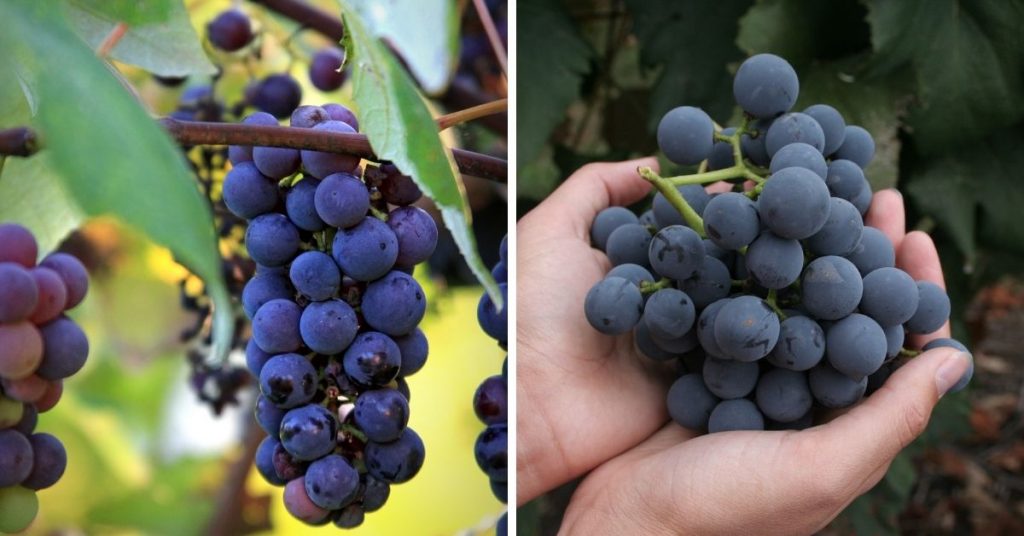
Concord grapes are fruits that appear with dark-blue or purple skin. These fruits mostly grow in the Finger Lakes District of New York, Lake Erie, Southwestern Michigan, and the Yakima Valley in Washington.
The concord grapes are rich in nutrients and minerals. They also contain compounds that fight free radicals. As such, they are ideal for your heart.
Black Currants
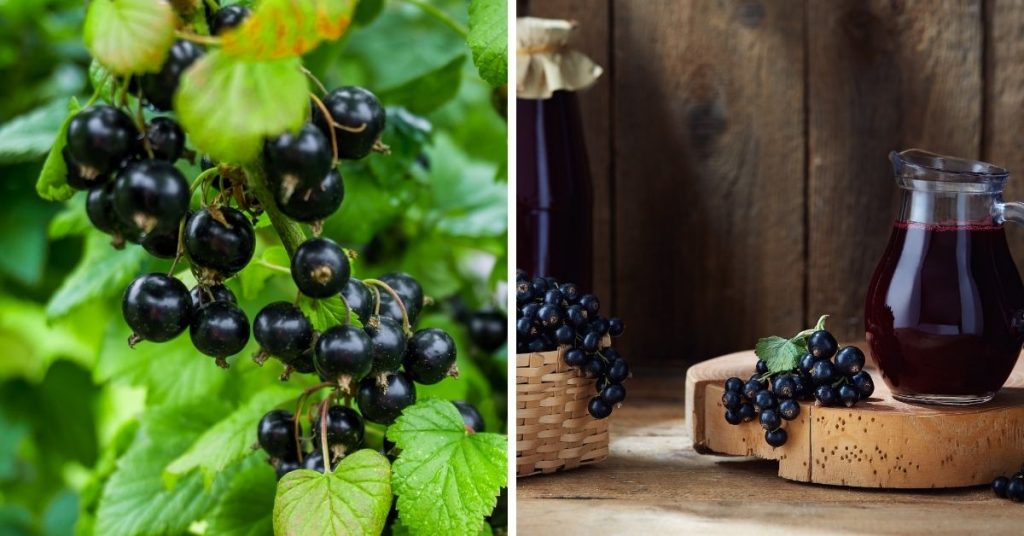
Black Currants, also known as Ribes Nigrum, are dark-blue fruits that are commonly found in the temperate regions of northern Asia and central/northern Europe. These fruits offer tons of health benefits; one of them is that it comes with a high concentration of anthocyanins and vitamin C. [4]
Apart from that, black currant also contains several different vitamins, such as vitamin A, vitamin B-5, vitamin B-6, vitamin B-1, and vitamin E.
Blue Tomatoes
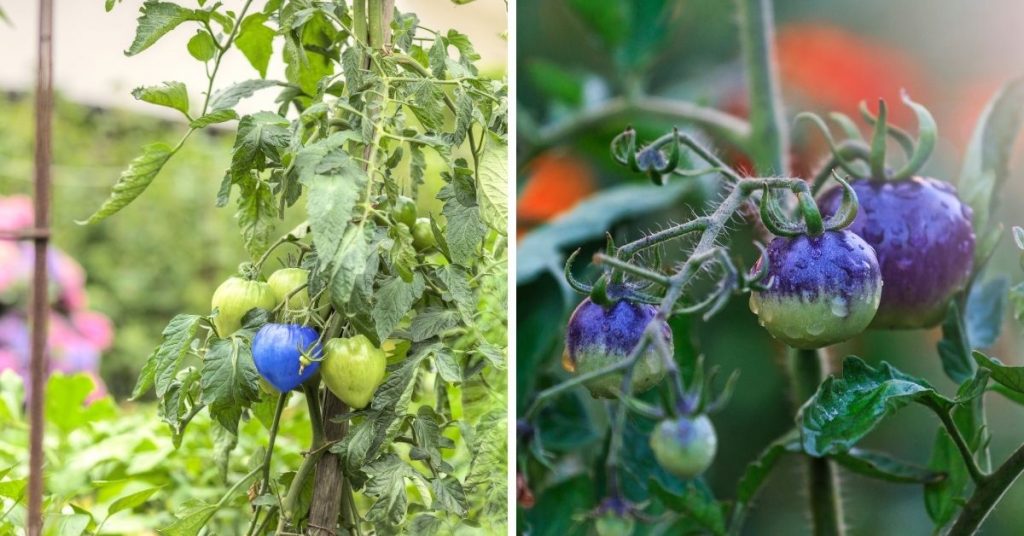
Blue Tomatoes are dark-blue fruits that can be found in Peru and on the Galapagos Islands. These fruits are blue because of the presence of anthocyanin – an antioxidant that is responsible for the blue color of blueberries, blackberries, and bilberries.
Blue tomatoes, as you already know, are rich in anthocyanins, which helps to prevent cancer. Apart from that, these antioxidants also help to reduce inflammation and prevent heart diseases.
Huckleberries
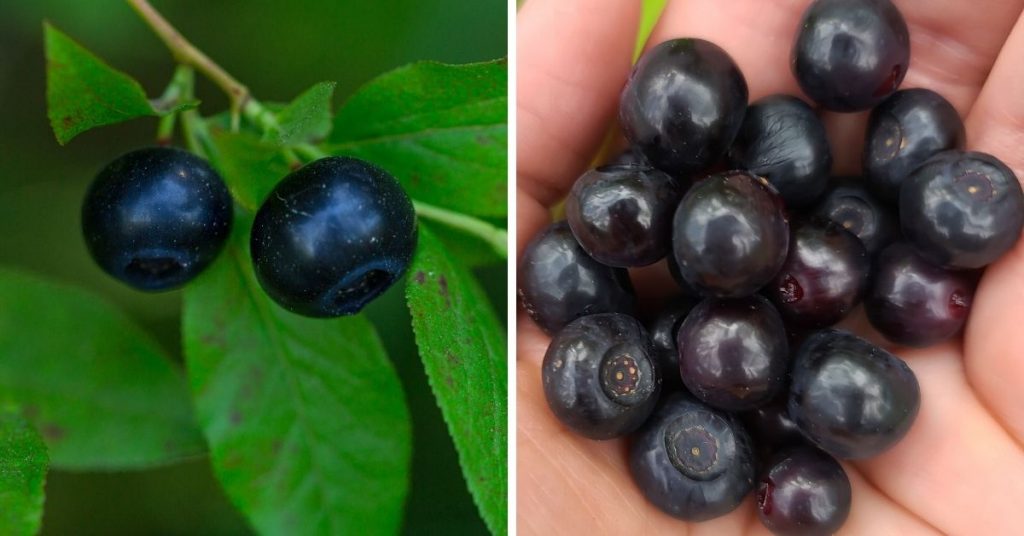
Huckleberries are small, round berries that look like blueberries. These fruits can be found in the Pacific Northwest and Northwestern National Forests. Speaking of their health benefits, huckleberries are extremely rich in antioxidants, vitamin C, potassium, and potassium. With these nutrients, it’s safe to say that these fruits are perfect for preventing heart disease, glaucoma, cancer, and diabetes.
Chokeberry

Chokeberries are not that popular in the US as they are in Eastern Europe and Russia. In these parts of the world, chokeberry is considered as one of the healthiest fruits. This is because it helps in many conditions, such as high cholesterol, heart disease, high blood pressure, etc. [5] It is full of antioxidants and cleans our bodies.
Why Are Blue Fruits So Rare?
As you already know, the blue color of most of the fruits listed above is caused by the presence of anthocyanins. Unfortunately, blue anthocyanins are chemically less stable when compared to the other types of pigments in fruits. As such, the blue anthocyanins usually get dominated by the other pigments, such as red and green anthocyanin. This explains why blue fruits are so rare in nature.
